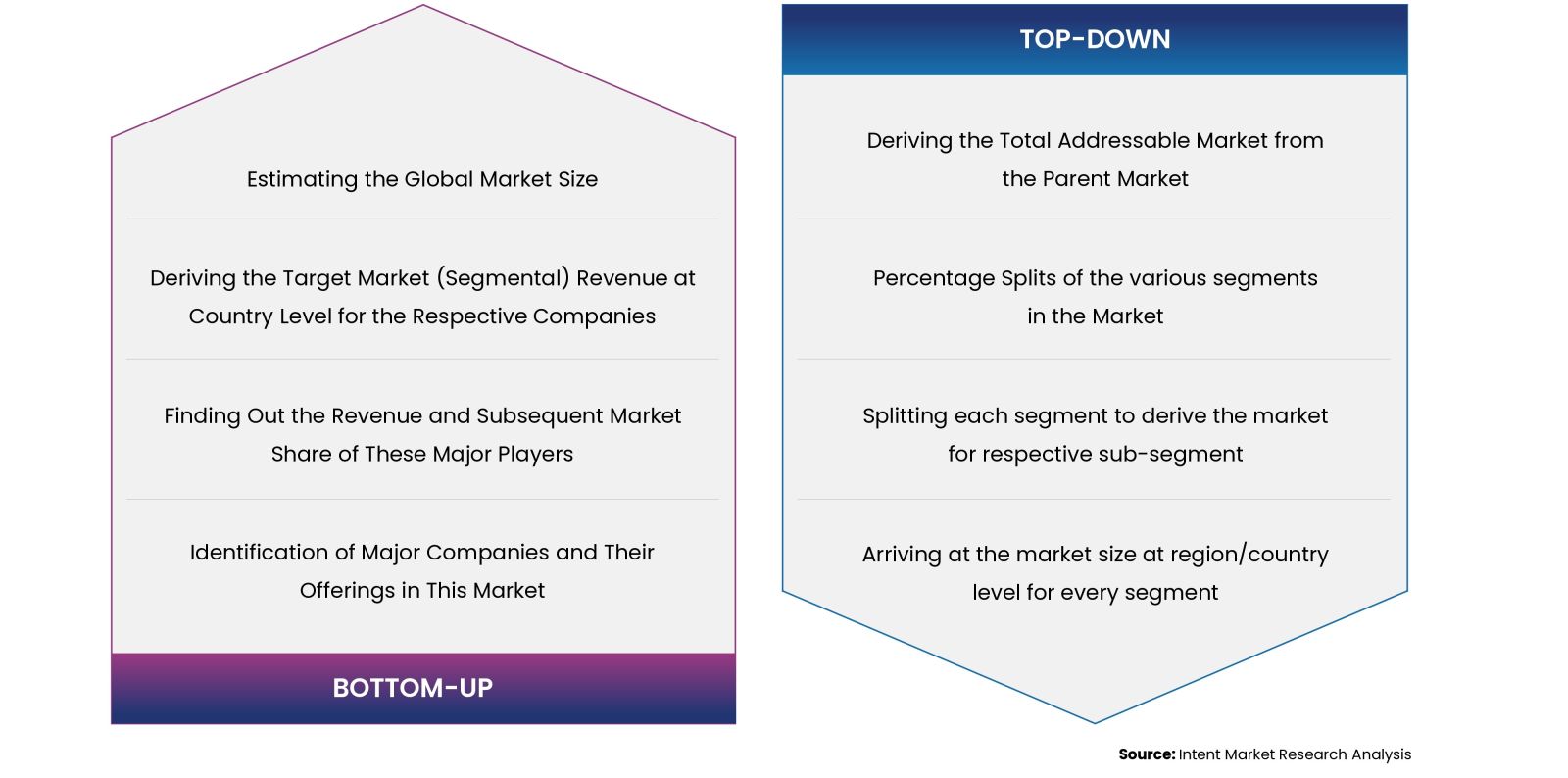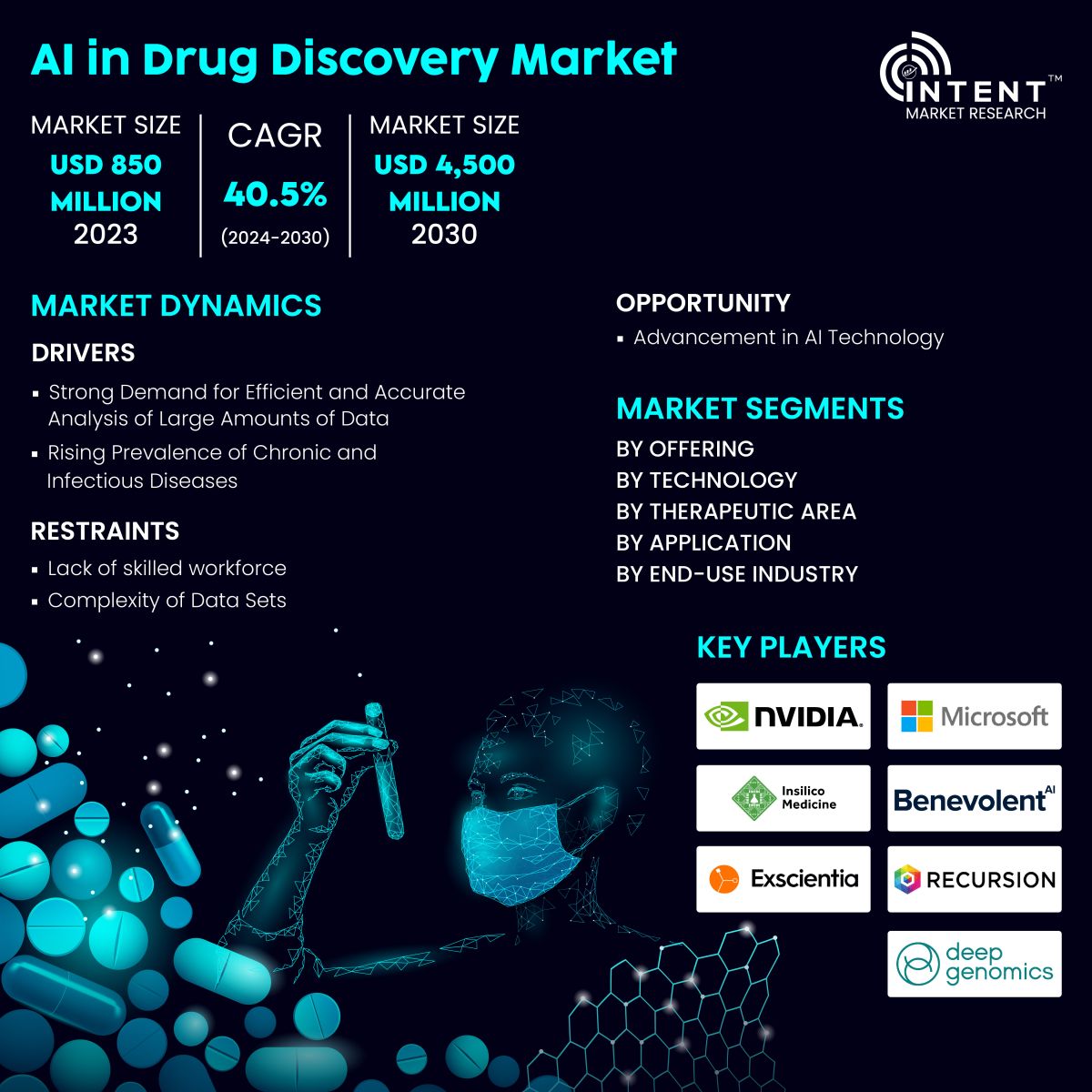AI in Drug Discovery Market is expected to grow from USD 850 million in 2023-e at a CAGR of 40.5% to touch USD 4,500 million by 2030. The AI in drug discovery market is a competitive market, the prominent players in the global market include BenevolentAI, BioXcel Therapeutics, Deep Genomics, Exscientia, Google, Insilico Medicine, IQVIA, Labcorp, Microsoft, NVIDIA, and Recursion.
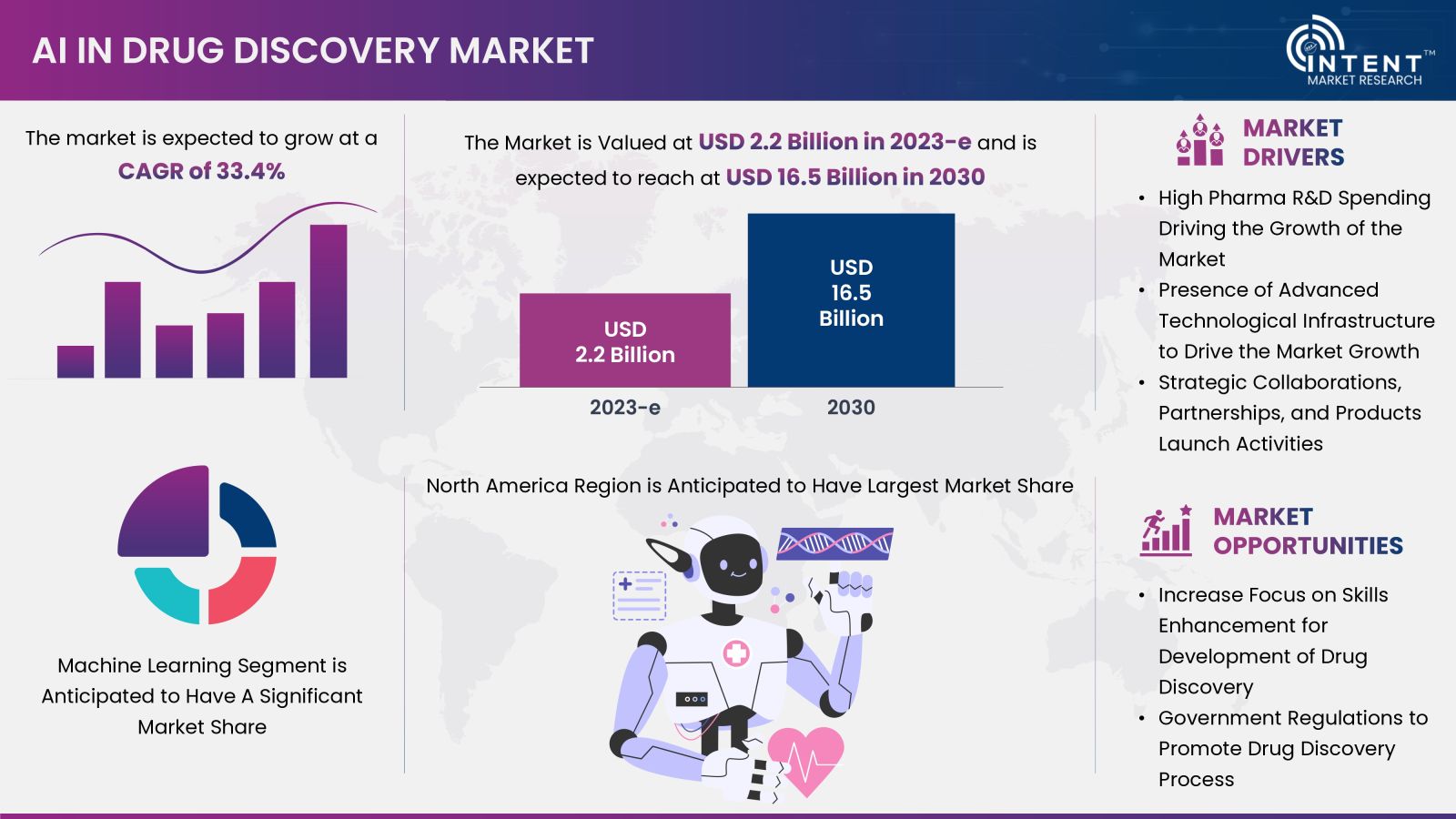
Drug discovery refers to the scientific process of identifying and developing new therapeutic compounds or medications. It involves a systematic and multidisciplinary approach to discovering chemical compounds that may have the potential to become drugs for treating diseases. The incorporation of AI into drug discovery stands to profoundly strengthen the market landscape. AI has the capability to expedite research by fine-tuning experiments and prioritizing high-impact targets, thereby enhancing efficiency in the drug discovery process.
The field of AI has experienced notable progress in recent years. AI is now a common feature in numerous industries, with applications spanning diverse activities such as image recognition, analysis of large and unstructured datasets, personalized learning, and various other domains.
AI in drug discovery market is driven by the increasing demand for efficient and accurate analysis of large datasets, crucial for accelerating the drug discovery process. The rising prevalence of chronic and infectious diseases further propels this market, necessitating advanced tools for swift and effective drug development.
However, the market faces restraints such as a shortage of skilled workforce and the complexity of datasets, challenging the seamless integration of AI technologies. An opportunity lies in the continuous advancement of AI technology, offering the potential to overcome existing challenges and revolutionize drug discovery by providing innovative solutions. As technology progresses, the market is poised to address current limitations and capitalize on the growing need for sophisticated approaches in the pharmaceutical industry.
Strong demand for efficient and accurate analysis of large amounts of data to drive the market
Increasing demand for precise analysis of extensive datasets is a key driver for the AI in drug discovery market. With the vast amount of biological and chemical data generated in the pharmaceutical industry, there is a pressing need for advanced technologies like AI to efficiently process and analyze this information. AI tools, particularly machine learning algorithms, play a pivotal role in extracting meaningful insights from complex datasets, expediting the drug discovery process.
The ongoing advancements in AI technology present a significant opportunity for the drug discovery market. As AI technologies, such as machine learning and natural language processing, continue to evolve, there is potential for overcoming existing challenges. Innovations in AI can lead to more efficient algorithms capable of handling complex data sets, thereby improving the accuracy and speed of drug discovery processes. The market can capitalize on these advancements to drive further innovation and address current limitations in drug discovery.
Lack of skilled workforce to hinder the market growth
The shortage of a skilled workforce with expertise in both AI and pharmaceuticals poses a significant challenge for the AI in drug discovery market. The successful integration of AI technologies requires professionals who can navigate the complexities of both domains. The scarcity of such skilled personnel may hinder the seamless implementation of AI solutions in drug discovery processes.
The services segment held the predominant market share
Categorized by offering, the services segment anticipated to exhibit the highest CAGR during the forecast period is, with its prominence attributed to playing a crucial role in conducting comprehensive analysis and interpretation of complex biological and chemical data. Utilizing sophisticated machine learning algorithms, these services facilitate the extraction of meaningful insights from extensive datasets. This, in turn, aids in the identification of potential drug candidates and enhances the accuracy of predicting their behaviors. The collective impact of these factors contributes to the dynamic expansion of the services segment within the market.
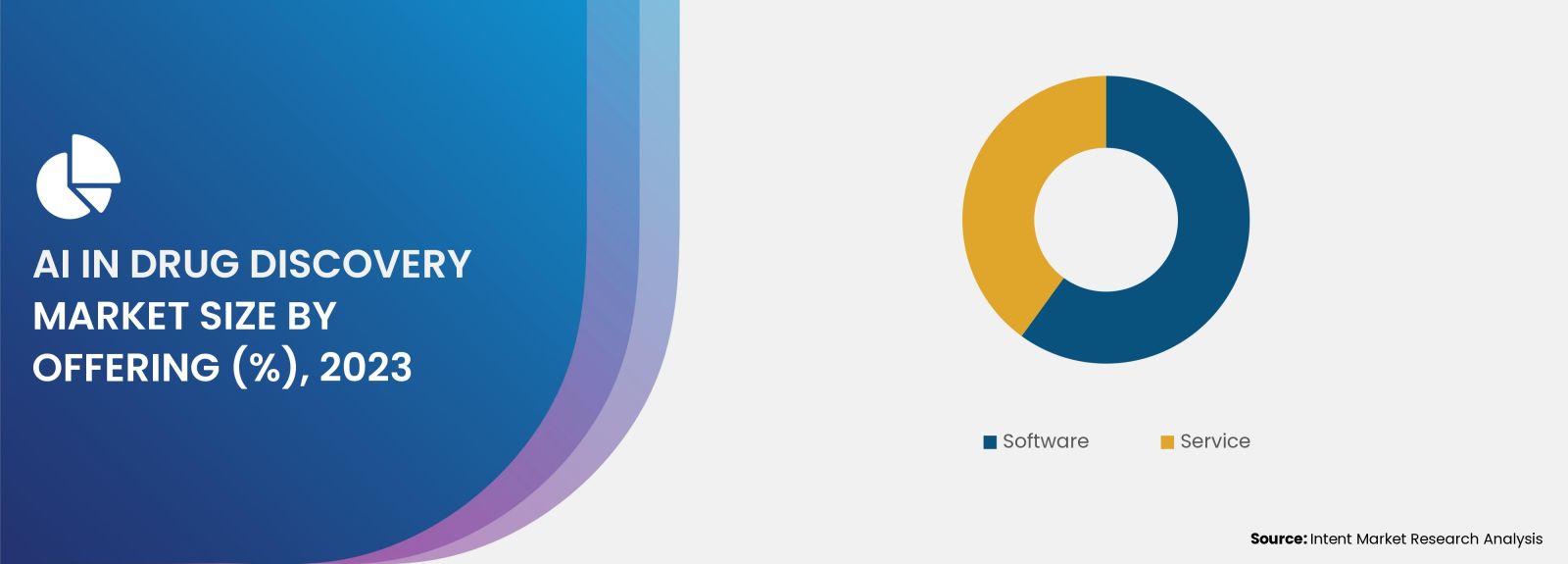
Machine learning segment held the largest share during the forecast period
The machine learning segment dominated the AI in drug discovery market in terms of market share and is anticipated to achieve the significant growth during the forecast period. Within the realm of machine learning technology, further subdivisions include deep learning, supervised learning, reinforcement learning, unsupervised learning, and other machine learning technologies. Machine learning algorithms consistently exhibit exceptional proficiency in analyzing complex datasets across genomics, proteomics, chemical structures, and clinical data. It empowers researchers in predicting potential drug interactions, efficacy profiles, and safety attributes with greater precision.
Neurology segment to drive the market
The neurology segment is projected to exhibit the highest CAGR within the AI in drug discovery market in 2023. This is due to the crucial role played by AI in addressing the complexities associated with the development of drugs for neurological conditions. Furthermore, strategic collaborations between pharmaceutical entities and solution providers play a substantial role in contributing to the heightened growth rate observed within the neurology segment.
Target identification segment to drive the market
Target identification segment is anticipated to witness significant growth during the forecast period. Target identification involves pinpointing specific biological entities crucial for treating diseases. Utilizing AI, researchers analyze vast datasets to identify potential drug targets. AI's precision accelerates the process, streamlining the development of targeted and effective therapeutic interventions.
Pharmaceuticals invest heavily in AI-driven drug discovery for rapid advancements
The pharmaceutical industry is making substantial investments in AI-based drug discovery, reflecting a strategic shift toward leveraging advanced technologies to enhance and expedite the drug development process. This proactive approach is evident through the significant financial commitments made by pharmaceutical companies, demonstrating their recognition of the transformative potential of AI in drug discovery. Many established pharmaceutical companies are forming partnerships or acquiring AI start-ups to tap into their innovative technologies, expertise, and unique approaches to problem-solving.
North America is anticipated to witness significant market growth in the forecast period
North America has secured the leading position in the AI in drug discovery market and is anticipated to sustain this dominance with the highest CAGR throughout the forecast period. This can be attributed to North America's robust technological infrastructure, providing a solid foundation for the seamless integration and application of AI technologies in drug discovery.
Moreover, the region is supported by factors such as the presence of key industry players, a well-established pharmaceutical and biotechnology sector, substantial investments in research and development, and a steadfast commitment to advancing innovative solutions. These elements collectively contribute decisively to North America's dominant market presence, reflecting the region's sustained and remarkable growth trajectory in the AI in drug discovery market.
Major industry players are enhancing their positions by actively developing digital twin platforms
The market is characterized by intense competition due to the presence of numerous international and domestic players. The AI in drug discovery market, in particular, is dominated by key players such as BenevolentAI, BioXcel Therapeutics, Deep Genomics, Exscientia, Google, Insilico Medicine, IQVIA, Fujitsu, Labcorp, Microsoft, NVIDIA, Recursion, and Relay Therapeutics, amongst others. These industry leaders are primarily focused on acquiring smaller players and innovating their product lines to cater to changing consumer preferences and needs. The success of market players is heavily dependent on their ability to adapt to changing market trends and consumer preferences.
- In July 2023, Aiforia initiated a partnership with Orion to jointly develop AI-driven image analysis solutions tailored for preclinical research and product development.
- In July 2023, NVIDIA revealed a substantial investment of USD 50 million in Recursion Pharmaceuticals, aiming at building artificial intelligence-assisted models for drug discovery.
- In May 2023, Google launched advanced AI tools, including the Multiomics Suite and Target and Lead Identification Suite, designed to expedite drug discovery processes, particularly within the realm of precision medicine.
AI in Drug Discovery Market Coverage
The report provides key insights into the AI in drug discovery market, and it focuses on technological developments, trends, and initiatives taken by the government in this sector. The report delves into market drivers, restraints, and opportunities, and analyses key players as well as the competitive landscape within the market.
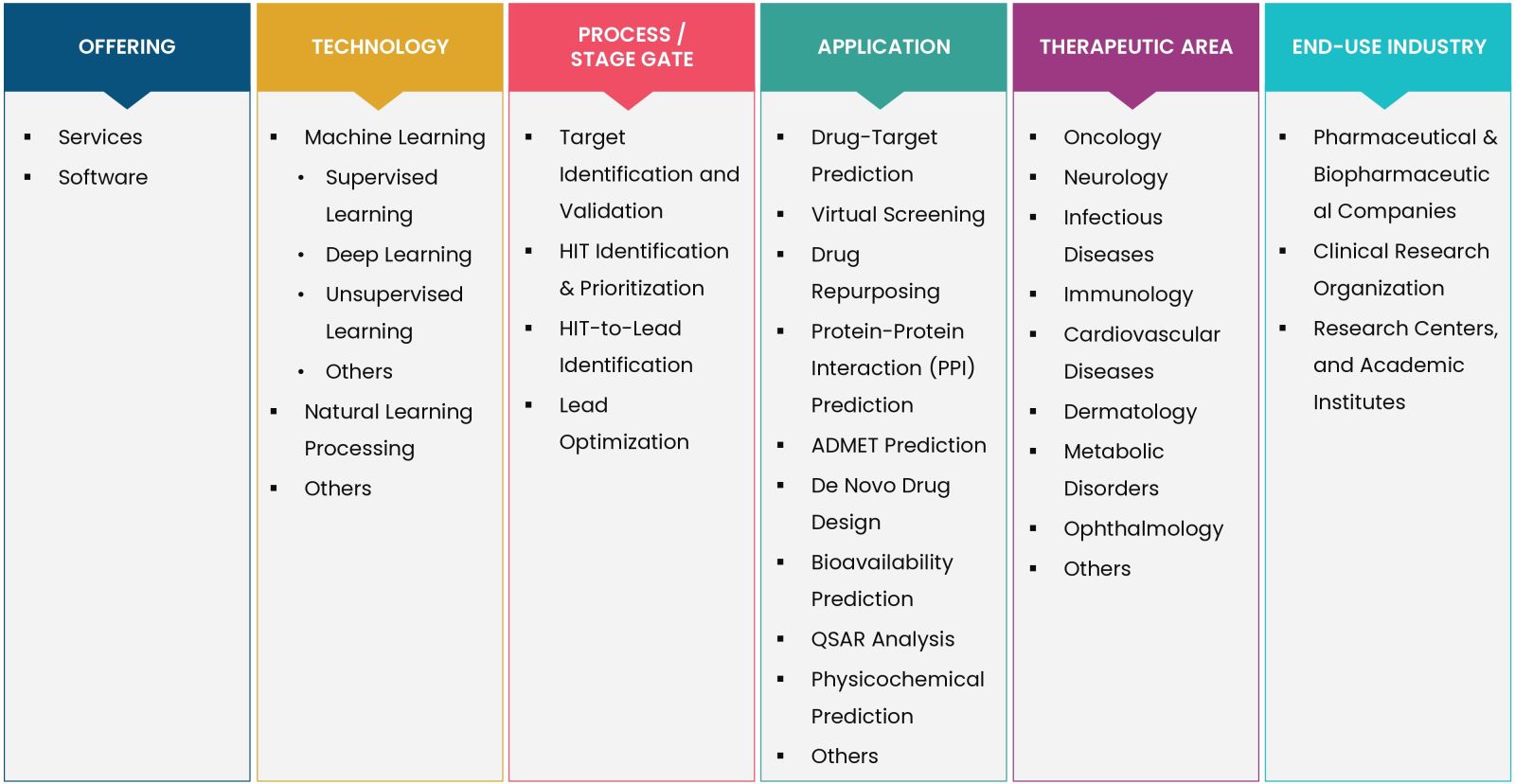
Report Scope
|
Report Features |
Description |
|
Market Size (2023-e) |
USD 850 million |
|
Forecast Revenue (2030) |
USD 4,500 million |
|
CAGR (2024-2030) |
40.5% |
|
Base Year for Estimation |
2023-e |
|
Historic Year |
2022 |
|
Forecast Period |
2024-2030 |
|
Report Coverage |
Market Forecast, Market Dynamics, Competitive Landscape, Recent Developments |
|
Segments Covered |
By Offering (Software, Service), By Technology (Machine Learning, Deep Learning, Natural Language Processing), By Therapeutic Area (Oncology, Neurology, Cardiovascular, Infectious Disease, Immunology), By Application (Target Identification, HIT Generation & Lead Identification, Lead Optimization), By End-Use Industry (Pharmaceutical & Biotechnology Companies, Contract Research Organization, Research Centers & Government Institutes) |
|
Regional Analysis |
North America (US, Canada), Europe (Germany, France, UK, Spain, Italy), Asia Pacific (China, Japan, South Korea, India), Latin America (Brazil, Mexico, Argentina), Middle East and Africa (Saudi Arabia, South Africa, Turkey, United Arab Emirates) |
|
Competitive Landscape |
BenevolentAI, BioXcel Therapeutics, Deep Genomics, Exscientia, Google, Insilico Medicine, IQVIA, Labcorp, Microsoft, NVIDIA, Recursion, Novartis AG, Deciphex |
|
Customization Scope |
Customization for segments, region/country-level will be provided. Moreover, additional customization can be done based on the requirements. |
|
Purchase Options |
We have three licenses to opt for Single User License, Multi-User License (Up to 5 Users), Corporate Use License (Unlimited User and Printable PDF) |
|
1.Introduction |
|
1.1. Study Assumptions and Market Definition |
|
1.2. Scope of the Study |
|
2.Research Methodology |
|
3.Executive Summary |
|
4.Market Dynamics |
|
4.1. Market Growth Drivers |
|
4.1.1.Strong Demand for Efficient and Accurate Analysis of Large Amounts of Data |
|
4.1.2.Rising Prevalence of Chronic and Infectious Diseases |
|
4.2. Market Growth Restraints |
|
4.2.1.Lack of skilled workforce |
|
4.2.2.Complexity of Data Sets |
|
4.3. Market Growth Opportunities |
|
4.3.1.Advancement in AI Technology |
|
4.4. Pestle Analysis |
|
4.5. Porter’s Five Forces Analysis |
|
5.Market Outlook |
|
5.1.Overview (Industry Snapshot) |
|
5.2. Technology Analysis |
|
5.3. Supply Chain Analysis |
|
5.4. Value Chain Analysis |
|
5.5. Patent Analysis |
|
5.6. Business Models |
|
5.7. Unmet Needs |
|
5.8. Key Stakeholder and Buying Criteria |
|
5.9. Trends/Disruptions Impacting Customers Businesses |
|
5.10. Key Conference and Events |
|
6.Market Segment Outlook (Market Size & Forecast: USD Billion, 2024 – 2030) |
|
6.1. Segment Synopsis |
|
6.2.By Offering |
|
6.2.1. Software |
|
6.2.2. Service |
|
6.3. By Technology |
|
6.3.1. Machine Learning |
|
6.3.1.1.Deep Learning |
|
6.3.1.2.Supervised Learning |
|
6.3.1.3.Reinforcement Learning |
|
6.3.1.4.Unsupervised Learning |
|
6.3.1.5.Other Machine Learning Technologies |
|
6.3.2. Natural Language Processing |
|
6.3.3. Others |
|
6.4. By Therapeutic Area |
|
6.4.1. Oncology |
|
6.4.2. Neurology |
|
6.4.3. Cardiovascular |
|
6.4.4. Infectious Disease |
|
6.4.5. Immunology |
|
6.4.6. Others |
|
6.5. By Application |
|
6.5.1. Target Identification |
|
6.5.2. HIT Generation & Lead Identification |
|
6.5.3. Lead Optimization |
|
6.5.4. Others |
|
6.6. By End-Use |
|
6.6.1. Pharmaceutical & Biotechnology Companies |
|
6.6.2. Contract Research Organization |
|
6.6.3. Research Centers & Government Institutes |
|
6.6.4. Others |
|
7.Regional Outlook (Market Size & Forecast: USD Billion, 2024 – 2030) |
|
7.1. Global Market Synopsis |
|
7.2. North America |
|
7.2.1. North America Artificial Intelligence (AI) in Drug Discovery Market Outlook |
|
7.2.1.1.US AI in Drug Discovery Market, By Offering |
|
7.2.1.2.US AI in Drug Discovery Market, By Technology |
|
7.2.1.3.US AI in Drug Discovery Market, By Therapeutic Area |
|
7.2.1.4.US AI in Drug Discovery Market, By Application |
|
7.2.1.5.US AI in Drug Discovery Market, By End-Use Industry |
|
*Note: Cross-segmentation by segments for each country will be covered as shown above. |
|
7.2.2. Canada |
|
7.3. Europe |
|
7.3.1. Europe AI in Drug Discovery Market Outlook |
|
7.3.2. Germany |
|
7.3.3. UK |
|
7.3.4. France |
|
7.3.5. Spain |
|
7.3.6. Italy |
|
7.4. Asia-Pacific |
|
7.4.1. Asia-Pacific AI in Drug Discovery Market Outlook |
|
7.4.2. China |
|
7.4.3. India |
|
7.4.4. Japan |
|
7.4.5. South Korea |
|
7.4.6. Australia |
|
7.5. Latin America |
|
7.5.1. Latin America AI in Drug Discovery Market Outlook |
|
7.5.2. Mexico |
|
7.5.3. Brazil |
|
7.6. Middle East & Africa |
|
7.6.1. Middle East & Africa AI in Drug Discovery Market Outlook |
|
7.6.2. Saudi Arabia |
|
7.6.3. UAE |
|
8.Competitive Landscape |
|
8.1. Market Share Analysis |
|
8.2. Volume Output Analysis |
|
8.3. Company Strategy Analysis |
|
8.4. Competitive Matrix |
|
9.Company Profiles |
|
9.1.BenevolentAI |
|
9.1.1. Company Synopsis |
|
9.1.2. Company Financials |
|
9.1.3. Product/Service Portfolio |
|
9.1.4. Recent Developments |
|
9.1.5. Analyst Perception |
|
*Note: All the companies in the section 9.1 will cover same sub-chapters as above. |
|
9.2. BioXcel Therapeutics |
|
9.3. Deep Genomics |
|
9.4. Exscientia |
|
9.5. Google |
|
9.6. Insilico Medicine |
|
9.7. IQVIA |
|
9.8. Labcorp |
|
9.9. Microsoft |
|
9.10.NVIDIA |
|
9.11.Recursion |
|
9.12. Novartis AG |
|
9.13. Deciphex |
Intent Market Research employs a rigorous methodology to minimize residual errors by carefully defining the scope, validating findings through primary research, and consistently updating our in-house database. This dynamic approach allows us to capture ongoing market fluctuations and adapt to evolving market uncertainties.
The research factors used in our methodology vary depending on the specific market being analyzed. To begin with, we incorporate both demand and supply side information into our model to identify and address market gaps. Additionally, we also employ approaches such as Macro-Indicator Analysis, Factor Analysis, Value Chain-Based Sizing, and forecasting to further increase the accuracy of the numbers and validate the findings.
Research Approach
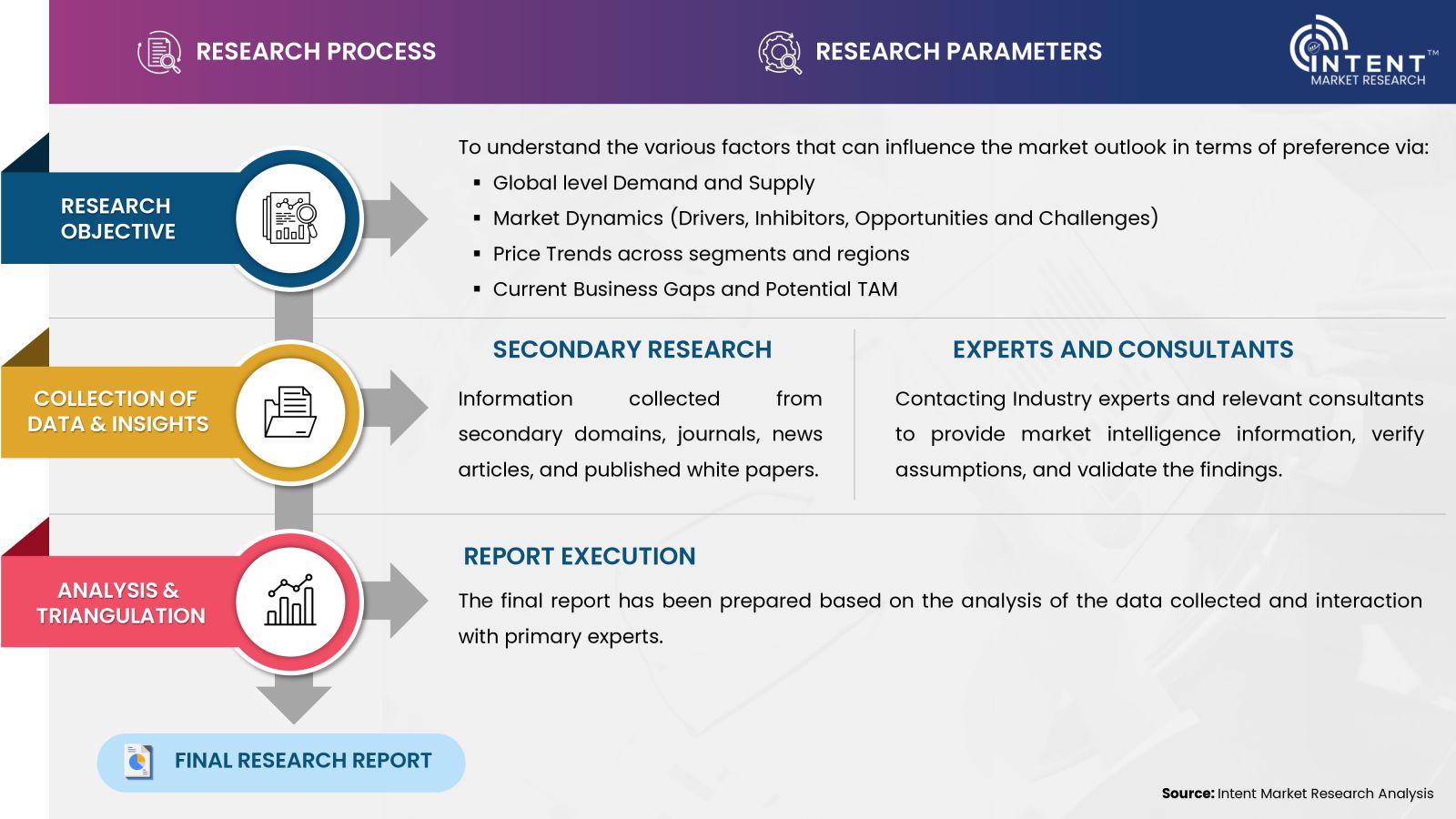
- Secondary Research Approach: During the initial phase of the research process, we acquire and accumulate extensive data continuously. This data is carefully filtered and validated through a variety of secondary sources.
- Primary Research Approach: Following the consolidation of data gathered through secondary research, we initiate a validation and verification process to verify all the market numbers and assumptions by engaging with the subject matter experts.
Data Collection, Analysis and Interpretation:
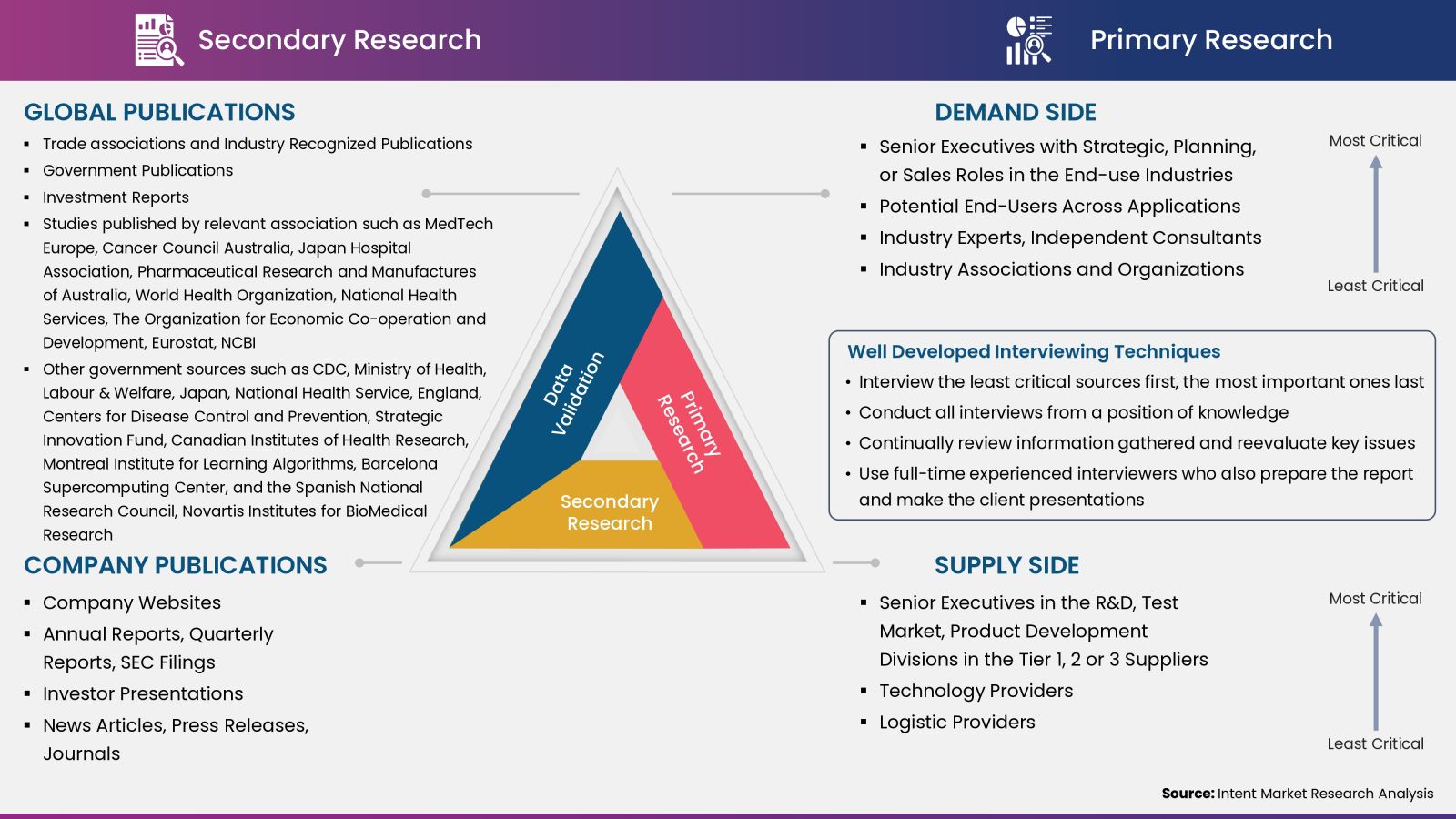
Research Methodology
Our market research methodology utilizes both top-down and bottom-up approaches to segment and estimate quantitative aspects of the market. We also employ multi-perspective analysis, examining the market from distinct viewpoints.
